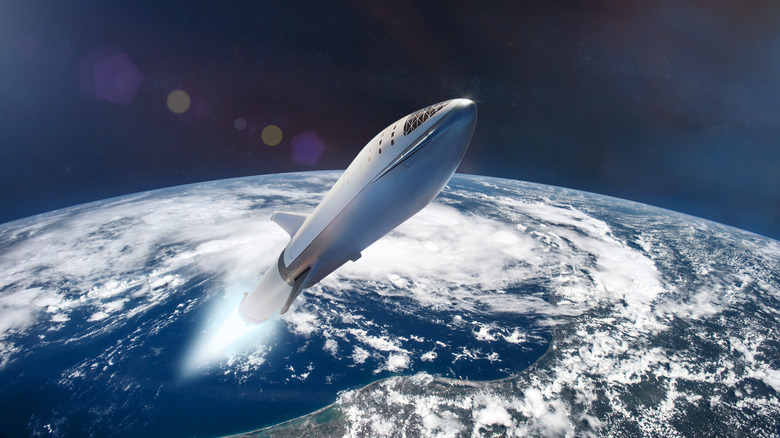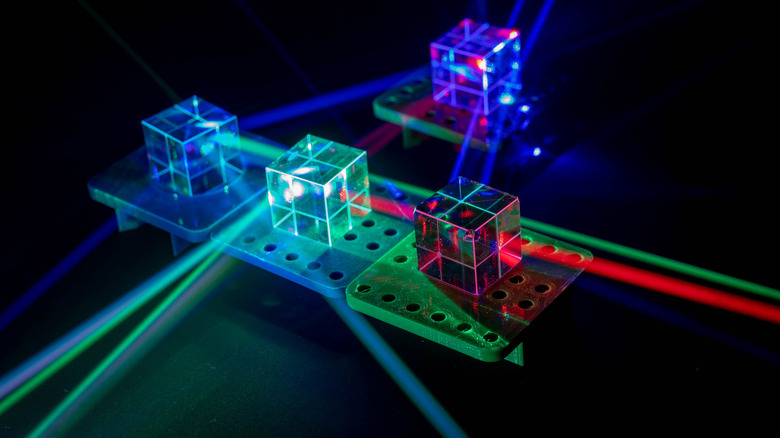What Would Happen If You Traveled Faster Than The Speed Of Light?
As humanity ventures further into space, faster methods of travel will need to be invented in order to allow us to reach far-off destinations. The record for the fastest a human has ever traveled is shared by the three astronauts aboard Apollo 10, who reached a top speed of 24,790 mph after completing an orbit around the moon (via the BBC). According to Universe Today, a trip to Mars can take anywhere from 150-300 days, depending on many factors, including the alignment of Earth and Mars during launch.
If humans want to travel outside of our solar system, it will take a lot longer than the several-month journey to Mars. It took NASA's Voyager 1 probe nearly 35 years to reach interstellar space, and it was not slowed down by human occupants, necessities, and heavy equipment (via NASA). Obviously, this speed is not feasible for human space exploration. While people have come up with many ideas for speeding up spaceflight, perhaps the most talked about is finding a way to travel faster than the speed of light. This concept has been explored in many sci-fi stories, but what does it look like when applied in real life?
The speed of light is a universal speed limit
Unfortunately, for those who dream of jumping into hyperspace, this version of faster-than-light space travel isn't as simple as Star Wars makes it seem. This is because the laws of physics simply don't allow for it. According to Einstein's famous equation E=mc², the more energy an object has (aka, how fast it moves) the greater its mass (aka, the heavier it is). This means that an object with mass, like a person or rocket, will only get heavier the faster it moves (via Science ABC).
While this increase in weight isn't noticeable at normal speeds, it starts to become an issue when objects get close to the speed of light. Objects traveling at 90% of the speed of light will be two times heavier than their original mass. According to the American Museum of Natural History, as you get closer to the speed of light, you will become so heavy that you would eventually be unable to move, because it would require an infinite amount of energy to accelerate to the speed of light. In this way, the speed of light acts like a universal speed limit, because nothing with mass can go faster than it.
Some particles can travel almost as fast as light
While human space travel may not ever reach the speed of light, other objects can. Tiny particles, known as neutrinos, are nearly massless, allowing them to travel almost as fast as the speed of light. According to the Fermi National Accelerator Laboratory, these particles are a type of fundamental particle, just like electrons, protons, and neutrons. Neutrinos are the lightest of all subatomic particles. Neutrinos are so small and lightweight that measurements made in 2011 by The Gran Sasso National Laboratory concluded that they were traveling faster than light (via Live Science).
According to Nature Magazine, it was later discovered that neutrinos are not capable of traveling faster than the speed of light, and nothing else we have found so far is able to, either. For now, it looks as though humans are stuck researching options for cryogenic sleep pods for our long-distance space journeys. Until then, we will just have to stick to traversing the planets in our own solar system.


